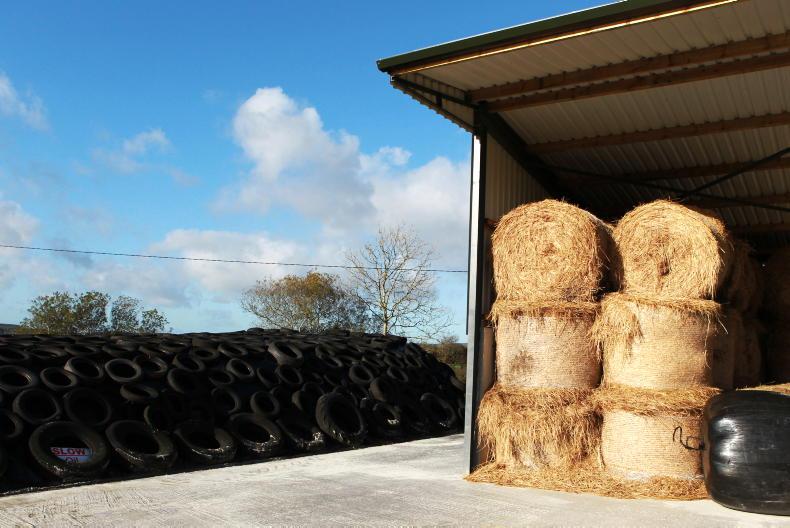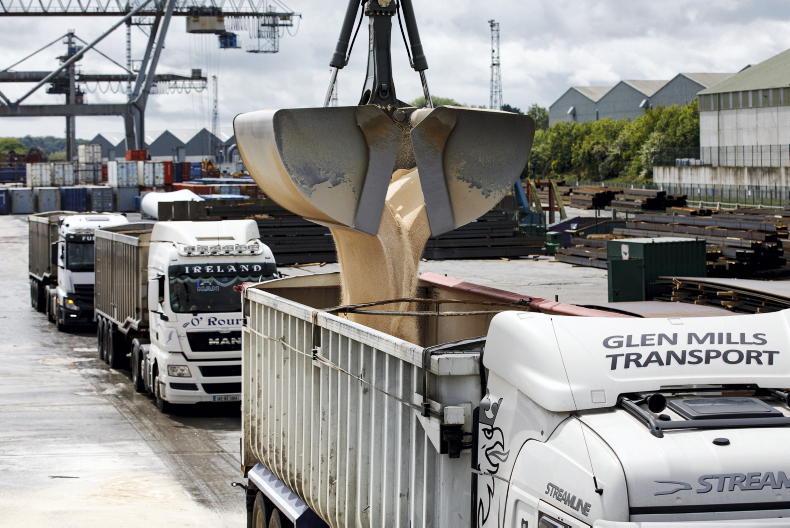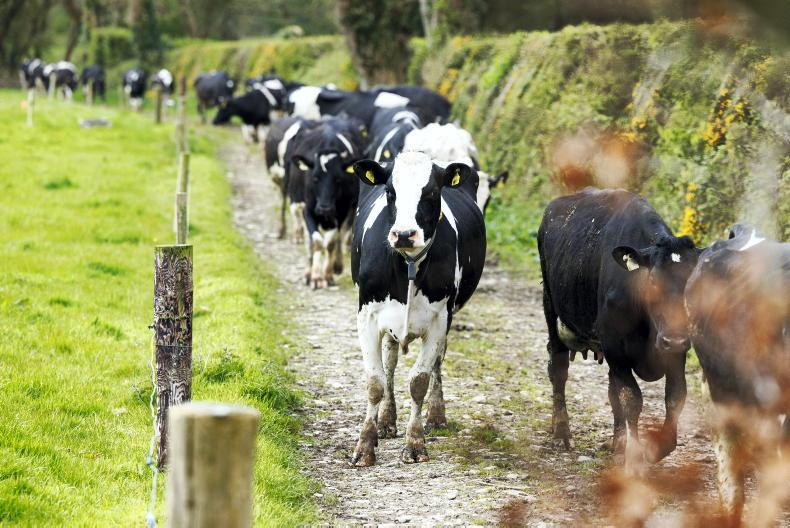Over the last number of years there has been a lot of talk about urea and the benefits of protected urea.
Tillage farmers in the main are used to CAN as their main source of nitrogen (N). However, costs this year will mean a need to switch to urea.
Two of the main reasons why tillage farmers haven’t traditionally used urea in the past is the risk of ammonia nitrogen loss to the air and some difficulties in spreading.
At last week’s Irish Tillage and Land Use Society spring workshop held in Teagasc Oak Park, Richie Hackett of Teagasc displayed figures showing how CAN has worked out €1/kg more expensive than urea at some recent prices. An example is outlined above and can be adapted to up-to-date prices.
Nitrogen losses
Nitrogen is generally used a lot more efficiently on tillage land than on grassland, but there is still work to do.
Richie stated: “There are benefits to using urea on tillage but because you’re starting from a lower base the benefits are not as high as in grassland.”
“Nitrogen is a very leaky nutrient. It spends most of its time trying to escape,” Richie commented.
Nitrate loss to water and nitrous oxide to air are losses from CAN, while ammonia gas is the main loss when using urea. This means expensive nitrogen is polluting the air and not being used to produce a high-yielding crop.
Protected urea is treated with a urease inhibitor which slows down nitrogen loss to the air as ammonia.
Ammonia loss is highest from urea when spread in dry conditions.
Protected urea would be at a lower risk of ammonia loss once spread in the right conditions. It needs to be used ahead of light rain like all fertilisers.
Richie displayed trial work which showed that there is no significant difference in yield between CAN, protected urea and urea on winter and spring barley.
He also displayed how protected urea can dramatically reduce ammonia loss and how applying standard urea before 10mm to 15mm of rain can reduce ammonia loss.
Spreading urea
A major point Richie made was that farmers need to be aware that urea fertiliser is less dense than CAN and so can be more difficult to spread at wider widths.
If the spreader isn’t set up right then farmers could be looking at yellow stripes across fields where fertiliser simply wasn’t spread wide enough.
He explained that farmers on tramlines which are wider than 15m need to be careful and that once tramlines go over 24m it can be a big challenge to spread urea.
He also noted that urea blends can cause problems.
Make sure to calibrate your spreader correctly. Discs or vanes may need to be changed, depending on the spreader. Farmers should do a tray test to ensure their spread pattern is correct.
Liquid N
Richie also mentioned the use of liquid nitrogen or urea ammonium nitrate (UAN). He explained that this is a mixture of ammonium nitrate and urea in solution.
What does UAN contain?
50% of N as urea.25% of N as ammonium.25% of N as nitrate.Richie stressed the fact that this is a soil-acting fertiliser and is not a foliar fertiliser.
It is applied using a sprayer with either streamer bars or streamer nozzles.
It is sprayed in big droplets so that it bounces off the leaf on to the soil.
It is still at risk of loss to the environment so still needs to be applied at appropriate times, ahead of light rain and not in hot and dry conditions.
If too much liquid nitrogen is applied to the leaves, then there is a risk of scorch, so accuracy of application and avoiding overlaps is important.
Some other benefits of liquid nitrogen are that it allows fertiliser to be spread on a windy day and avoids losses into hedgerows.
CAN (27% N) at €800/t = €2.96/kg of N.
Urea (46% N) at €900/t = €1.95/kg of N.
Protected urea (46% N) at €970/t = €2.11/kg of N.
Calculating the cost
per kilo of N
To get the cost per kilo of nitrogen simply divide the price per tonne by the kilogrammes of nitrogen.
For example, if CAN, which contains 27% nitrogen, is €800/t you divide €800 by 270kg and you get a figure of €2.96/kg.
Richie explained that spreading 150kg N/ha on 40ha could result in a saving of €5,100 when looking at CAN versus protected urea.
Over the last number of years there has been a lot of talk about urea and the benefits of protected urea.
Tillage farmers in the main are used to CAN as their main source of nitrogen (N). However, costs this year will mean a need to switch to urea.
Two of the main reasons why tillage farmers haven’t traditionally used urea in the past is the risk of ammonia nitrogen loss to the air and some difficulties in spreading.
At last week’s Irish Tillage and Land Use Society spring workshop held in Teagasc Oak Park, Richie Hackett of Teagasc displayed figures showing how CAN has worked out €1/kg more expensive than urea at some recent prices. An example is outlined above and can be adapted to up-to-date prices.
Nitrogen losses
Nitrogen is generally used a lot more efficiently on tillage land than on grassland, but there is still work to do.
Richie stated: “There are benefits to using urea on tillage but because you’re starting from a lower base the benefits are not as high as in grassland.”
“Nitrogen is a very leaky nutrient. It spends most of its time trying to escape,” Richie commented.
Nitrate loss to water and nitrous oxide to air are losses from CAN, while ammonia gas is the main loss when using urea. This means expensive nitrogen is polluting the air and not being used to produce a high-yielding crop.
Protected urea is treated with a urease inhibitor which slows down nitrogen loss to the air as ammonia.
Ammonia loss is highest from urea when spread in dry conditions.
Protected urea would be at a lower risk of ammonia loss once spread in the right conditions. It needs to be used ahead of light rain like all fertilisers.
Richie displayed trial work which showed that there is no significant difference in yield between CAN, protected urea and urea on winter and spring barley.
He also displayed how protected urea can dramatically reduce ammonia loss and how applying standard urea before 10mm to 15mm of rain can reduce ammonia loss.
Spreading urea
A major point Richie made was that farmers need to be aware that urea fertiliser is less dense than CAN and so can be more difficult to spread at wider widths.
If the spreader isn’t set up right then farmers could be looking at yellow stripes across fields where fertiliser simply wasn’t spread wide enough.
He explained that farmers on tramlines which are wider than 15m need to be careful and that once tramlines go over 24m it can be a big challenge to spread urea.
He also noted that urea blends can cause problems.
Make sure to calibrate your spreader correctly. Discs or vanes may need to be changed, depending on the spreader. Farmers should do a tray test to ensure their spread pattern is correct.
Liquid N
Richie also mentioned the use of liquid nitrogen or urea ammonium nitrate (UAN). He explained that this is a mixture of ammonium nitrate and urea in solution.
What does UAN contain?
50% of N as urea.25% of N as ammonium.25% of N as nitrate.Richie stressed the fact that this is a soil-acting fertiliser and is not a foliar fertiliser.
It is applied using a sprayer with either streamer bars or streamer nozzles.
It is sprayed in big droplets so that it bounces off the leaf on to the soil.
It is still at risk of loss to the environment so still needs to be applied at appropriate times, ahead of light rain and not in hot and dry conditions.
If too much liquid nitrogen is applied to the leaves, then there is a risk of scorch, so accuracy of application and avoiding overlaps is important.
Some other benefits of liquid nitrogen are that it allows fertiliser to be spread on a windy day and avoids losses into hedgerows.
CAN (27% N) at €800/t = €2.96/kg of N.
Urea (46% N) at €900/t = €1.95/kg of N.
Protected urea (46% N) at €970/t = €2.11/kg of N.
Calculating the cost
per kilo of N
To get the cost per kilo of nitrogen simply divide the price per tonne by the kilogrammes of nitrogen.
For example, if CAN, which contains 27% nitrogen, is €800/t you divide €800 by 270kg and you get a figure of €2.96/kg.
Richie explained that spreading 150kg N/ha on 40ha could result in a saving of €5,100 when looking at CAN versus protected urea.










SHARING OPTIONS